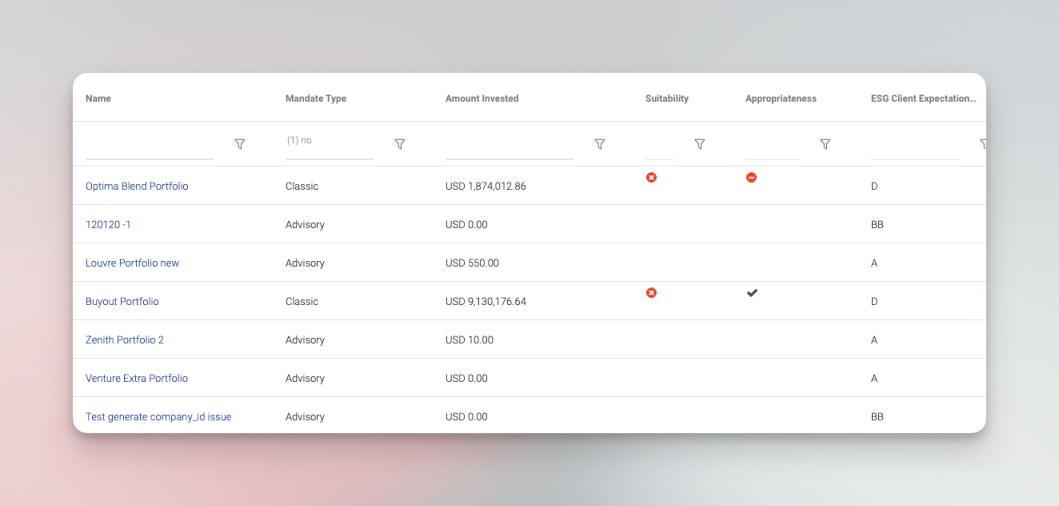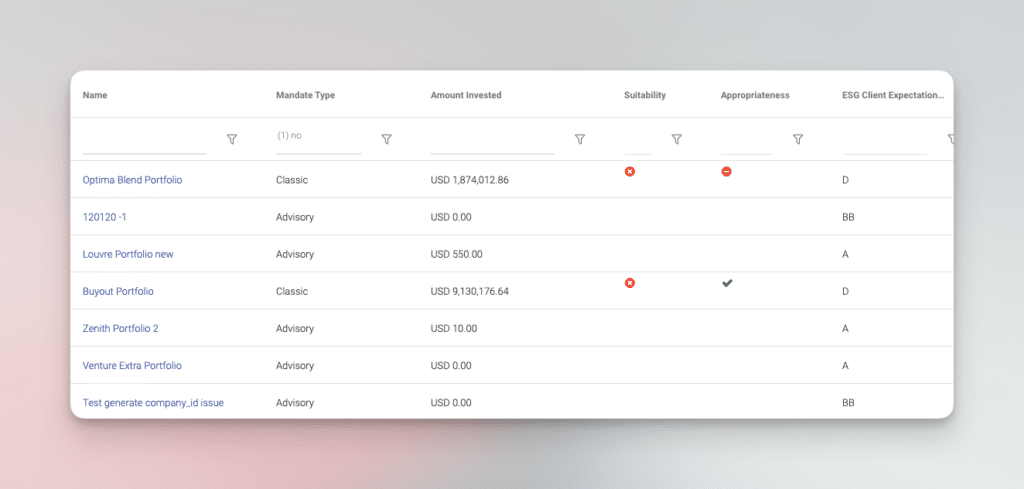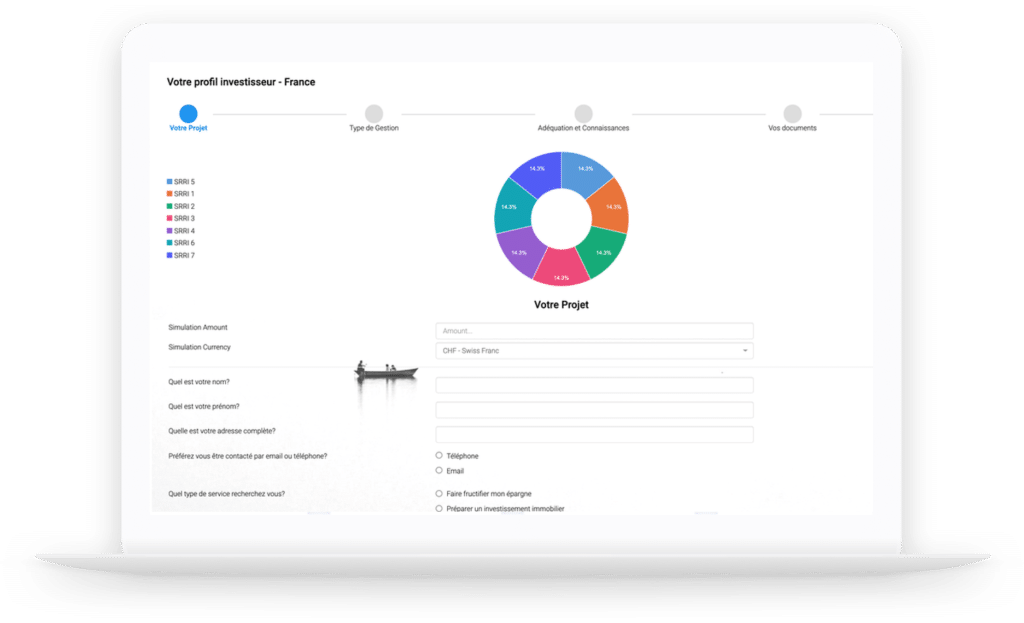The Ultimate Guide to Transaction Monitoring in 2023

In the rapidly evolving financial sector, transaction monitoring systems are essential for combating financial crimes, preventing money laundering, and ensuring compliance with regulatory standards. These systems enable financial institutions to detect and report suspicious activities by analyzing customer transactions, thereby safeguarding the integrity of the financial system.
For instance, the UK’s Financial Conduct Authority fined Metro Bank £16.7 million for significant lapses in its anti-money laundering controls between 2016 and 2020, highlighting the critical importance of effective transaction monitoring. Implementing robust transaction monitoring systems not only helps banks avoid substantial fines but also strengthens their reputation and trustworthiness among customers and regulators.
Our exhaustive guide will navigate you through the intricate landscape of transaction monitoring in 2023, examining its core elements, main contributors, critical components, and tangible triumphs. Prepare for an enlightening expedition as we unravel the complexities of transaction monitoring.
InvestGlass is poised at the forefront of this field, providing a state-of-the-art transaction monitoring tool that is not just a defense mechanism but a strategic asset for financial institutions. This tool is engineered with precision to detect and prevent illicit financial activities in real-time. It is equipped with cutting-edge technology that adapts to the unique operational needs of each client, offering a customizable and scalable solution.
By harnessing artificial intelligence and machine learning, InvestGlass automates the detection process, making it both efficient and effective. The system’s robust analytics and reporting capabilities also ensure that organizations can stay ahead of regulatory changes and maintain full compliance with ease. With InvestGlass, firms are empowered with a dynamic tool that not only safeguards their operations but also enhances their ability to oversee and manage transactions seamlessly.
Key Takeaways
- Transaction monitoring is a vital process used to detect and prevent fraudulent activities, maintain compliance with anti-money laundering regulations, and ensure financial system stability.
- It involves risk assessment, customizable rules leveraging advanced analytics & machine learning technologies for efficient detection of suspicious activity.
- Real life examples demonstrate the success of transaction monitoring in detecting & preventing financial crimes while optimizing operational efficiency.
Understanding Transaction Monitoring

Transaction monitoring refers to the surveillance of customer transactions. It involves observing transfers, deposits, and withdrawals either in real time or after they have been processed by a bank or financial institution. This vital process helps organizations to detect and prevent fraudulent activities, ensuring that they remain compliant with anti-money laundering (AML) regulations.
As the nature of financial crimes evolves, it’s crucial to have an effective transaction monitoring system to outsmart criminals and sustain the financial system’s integrity.
What is Transaction Monitoring?
Transaction monitoring forms a legally mandated, critical component of the Anti-Money Laundering (AML) process for financial institutions. Organizations can identify suspicious activities and patterns and take necessary actions to safeguard their customers and reputation through continuous analysis and monitoring of transactions.
To achieve this, an effective transaction monitoring system should adopt a risk-based approach, incorporate customizable rules, and leverage advanced analytics and machine learning technologies.
Implementing transaction monitoring systems poses several challenges for financial institutions, including maintaining a balance between compliance and operational costs, minimizing false positives, and keeping abreast of changing financial crimes.
However, by selecting appropriate transaction monitoring software and optimizing transaction monitoring processes, organizations can overcome these challenges and ensure compliance with AML regulations.
Why is Transaction Monitoring Important?
Transaction monitoring has a critical role in ensuring regulatory compliance, diminishing fraud risk, and providing protection for both businesses and customers.
By detecting and preventing money laundering, terrorist financing, and other financial crimes, transaction monitoring helps to safeguard the financial system from exploitation and ensure compliance with AML regulations. Moreover, financial institutions that fail to meet these requirements face significant fines and reputational damage.
Beyond its regulatory importance, transaction monitoring also contributes significantly to maintaining financial system stability and upholding public trust in financial institutions. By integrating transaction monitoring software, small to medium businesses can stay compliant without having to engage an entire risk management team, enhancing their overall efficiency and effectiveness.
Key Players in Transaction Monitoring

The transaction monitoring landscape comprises various key players, such as traditional financial institutions, money service businesses (MSBs), and innovative Fintech companies. Each of these players has a unique role to play in the AML transaction monitoring process, bringing their own set of challenges and opportunities to the table.
Financial Institutions
Financial institutions, such as banks, credit unions, and insurance companies, are responsible for continuously analyzing and monitoring transactions to identify and report any suspicious activities, including:
- Money laundering
- Terrorist financing
- Fraud
- Other financial crimes
By implementing transaction monitoring systems, these institutions can effectively detect and prevent financial crimes, protect their customers, and ensure compliance with regulatory requirements.
However, financial institutions often face challenges when implementing transaction monitoring systems, such as balancing compliance and operational costs, reducing false positives, and keeping up with the changing landscape of financial crimes. To address these challenges, institutions can select appropriate transaction monitoring software, optimize transaction monitoring processes, and leverage real-life examples of successful transaction monitoring implementations.
Money Service Businesses (MSBs)
Money Service Businesses (MSBs) provide services related to the conversion or transmission of money, such as money remitters, currency exchanges, and payment processors. Due to their diverse range of services and customer base, MSBs face unique challenges in transaction monitoring, including the complexity of their operations and the need to effectively monitor transactions for potential financial crimes.
Local regulators are responsible for monitoring MSB services, ensuring that they remain compliant with relevant regulations and industry standards.
Fintech Companies and InvestGlass solution to track suspicious transaction
Fintech innovators are reshaping the landscape of financial services, offering a myriad of revolutionary solutions—from digital wallets and online lenders to cryptocurrency exchanges. These avant-garde ventures are leveling the playing field, allowing smaller players to hold their ground against well-established financial organizations. These companies integrate advanced technologies like blockchain and artificial intelligence into their transaction monitoring solutions, staying on the cutting edge of security and compliance.
A prime exemplar of such innovation is iComply, which harnesses blockchain’s immutable ledger for enhanced transaction screening. Similarly, neobanks such as Chime, Varo Bank, and Current harness these technological advancements to refine their customer experiences and bolster their real-time transaction monitoring capabilities.
InvestGlass’s transaction monitoring platform stands as a pinnacle of this tech evolution, offering financial institutions a robust tool to scrutinize transaction risk and maintain compliance with regulations set forth by entities like the Financial Action Task Force (FATF). The platform specializes in real-time analysis, flagging suspicious transactions instantaneously and drawing on historical data to identify patterns indicative of money laundering typologies.
The AML transaction monitoring work facilitated by InvestGlass allows compliance teams to create custom rules tailored to individual customer risk profiles, improving the detection of fraudulent transactions and reducing the incidence of false positives.
This meticulous approach to monitoring online payments and money transfers is a mandatory process in the modern fight against financial crime, ensuring further investigation of anomalous behavior is prompt and effective.
By analyzing patterns of customer behavior and comparing them against a backdrop of past transactions, the system is adept at detecting suspicious activity, preventing money laundering, and ensuring that all customer due diligence is up to par.
InvestGlass empowers legal professionals and security measures by providing a transaction monitoring solution that not only meets compliance regulations but also adapts to the evolving nature of criminal tactics. This proactive stance in transaction risk management sets the stage for a safer financial environment for both financial institutions and their customers.
Components of an Effective Transaction Monitoring System

An effective transaction monitoring system should incorporate several key components, including a risk-based approach, customizable rules, and advanced analytics and machine learning technologies. These elements work together to ensure that organizations can accurately detect and prevent financial crimes, maintain compliance with AML regulations, and provide a seamless customer experience.
Risk-Based Approach
A risk-based approach to transaction monitoring involves:
- Implementing AML controls based on an organization’s assessment of risk and the risk level of its customers
- Prioritizing compliance efforts and focusing on areas of greater risk
- Resulting in a more effective and efficient transaction monitoring system.
One of the key steps in implementing a risk-based approach is conducting an institutional risk assessment, which helps organizations identify potential risks and vulnerabilities and develop appropriate controls and mitigation strategies. This assessment should consider factors such as the nature of the organization’s business, its products and services, its customer base, and the jurisdictions in which it operates.
Customizable Rules
Customizable rules in transaction monitoring systems enable organizations to tailor their system to their specific needs and ensure compliance with applicable regulations by adapting to unique business requirements and risks. These rules can be employed to define the parameters of a transaction monitoring system, including the types of transactions to be monitored, the thresholds for alert generation, and the actions to be taken when an alert is triggered.
The primary challenge of implementing customizable rules is ensuring that they are accurately configured and regularly updated to reflect any alterations to the organization’s risk profile. Furthermore, organizations must ensure that the rules are in compliance with applicable regulations. By creating and maintaining accurate and up-to-date rules, organizations can minimize false positives and enhance the precision of their transaction monitoring system.
Advanced Analytics and Machine Learning
Advanced analytics and machine learning in transaction monitoring involve the utilization of sophisticated analytical methods and AI algorithms to examine and recognize suspicious activities in financial transactions. These techniques make use of vast data sets and past patterns to detect potential risks and anomalies, thereby enabling organizations to enhance the efficacy and efficiency of their AML and financial crime compliance initiatives.
By capitalizing on extensive data and past patterns, organizations can identify potential risks and anomalies more expeditiously and precisely than traditional methods. Additionally, AI can be employed to refine transaction monitoring algorithms and suggest more effective risk rules when evaluating future transactions. This results in a more accurate and efficient transaction monitoring system, ensuring compliance with regulations and the protection of both businesses and customers.
Challenges and Solutions in Transaction Monitoring

In the ever-evolving landscape of financial crimes, organizations face a multitude of challenges when it comes to transaction monitoring. These challenges include balancing compliance and operational costs, reducing false positives, and adapting to evolving financial crimes.
This section delves into these challenges, providing practical solutions to help organizations achieve a balance between compliance, operational costs, and customer experience.
Balancing Compliance and Operational Costs
One of the most significant challenges faced by organizations when implementing transaction monitoring systems is striking a balance between compliance and operational costs. Regulatory requirements can be complex and costly to implement, while operational costs can be difficult to manage. To address this challenge, organizations can employ a risk-based approach to transaction monitoring, which allows them to prioritize their compliance efforts and focus on areas of greater risk.
Additionally, organizations should consider utilizing customizable rules, advanced analytics, and machine learning to ensure that their transaction monitoring system is both effective and efficient. By automating and streamlining the transaction monitoring process, organizations can significantly reduce manual effort and costs, ultimately strengthening their AML compliance and mitigating operational risk.
Reducing False Positives
False positive alerts, generated for legitimate transactions, can be a significant challenge for organizations implementing transaction monitoring systems. By reducing false positives, organizations can enhance:
- Precision
- Productivity
- Customer satisfaction
- Adherence in detecting and preventing financial crimes.
To achieve this, organizations can employ a risk-based approach, create customizable rules, and leverage advanced analytics and machine learning in their transaction monitoring processes.
Adapting to Evolving Financial Crimes
Financial crimes are constantly evolving, and organizations must adapt their transaction monitoring systems to keep pace with these emerging threats. Failing to adapt to the changing landscape of financial crimes can expose organizations to new threats and vulnerabilities, which could result in financial losses and damage to reputation.
To address these challenges, organizations can deploy risk-based approaches and customizable rules to identify and respond to new threats, as well as utilize advanced analytics and machine learning technologies to detect suspicious activity. By staying current with the latest threats and adapting their transaction monitoring systems accordingly, organizations can effectively combat evolving financial crimes and maintain compliance with relevant regulations.
Selecting the Right Transaction Monitoring Software

Choosing the right transaction monitoring software is a critical decision for any organization looking to implement an effective AML transaction monitoring process. This section will cover the considerations when choosing transaction monitoring software, such as regulatory compliance, flexibility and customization, and integration capabilities.
Compliance with Regulations
Ensuring that transaction monitoring software complies with relevant regulations and industry standards is of utmost importance when selecting a solution. Organizations must ensure that their chosen software enables them to meet their reporting obligations and adhere to anti-money laundering regulations and other applicable laws.
To achieve this, organizations should:
- Carefully evaluate potential software solutions and consider their ability to adapt to changing regulatory requirements and industry standards.
- Consider the challenges and solutions associated with complying with regulations when implementing and optimizing transaction monitoring processes.
- Choose a software that can effectively support these efforts.
Flexibility and Customization

Transaction monitoring software should offer:
- Flexibility and customization options to allow organizations to tailor the system to their specific needs and requirements
- Customizable rules to adjust the monitoring processes to internal policies, regulatory requirements, and risk appetite
- Effectiveness and efficiency in detecting and preventing financial crimes
Integration with Existing Systems
Seamless integration of transaction monitoring software with existing systems and processes is essential for a streamlined approach to detecting and preventing financial crimes. Integration facilitates the smooth transfer of transactional data between systems, enabling ongoing monitoring and examination of transactions.
However, integrating existing systems with transaction monitoring software can be complex, requiring secure data transfers and adherence to regulations. To overcome these challenges, organizations should:
- Carefully evaluate potential software solutions
- Consider their compatibility with existing systems
- Consider their ability to support effective collaboration and information sharing.
Implementing and Optimizing Transaction Monitoring Processes

Successful implementation and optimization of transaction monitoring processes require organizations to undertake a series of vital steps. These include:
- Conducting risk assessments
- Formulating tailored transaction monitoring rules
- Testing and validating systems
- Continuous monitoring and enhancement of processes
Risk Assessment and Rule Creation
The first step in implementing an effective transaction monitoring process is conducting a comprehensive risk assessment to identify potential risks and vulnerabilities. Based on the identified risks, organizations can then create tailored transaction monitoring rules to detect and prevent suspicious activities.
By conducting a risk assessment and establishing appropriate transaction monitoring rules, organizations can ensure that their system is effectively focused on the types of transactions that pose the greatest risk to their business and compliance objectives. This targeted approach allows organizations to minimize false positives and enhance the accuracy of their transaction monitoring system.
Testing and Validation
Once transaction monitoring rules have been established, organizations must test and validate their systems to ensure accurate detection of suspicious transactions. This involves creating test scenarios, running simulations, and evaluating the results to confirm the effectiveness of the rules and thresholds in identifying potential risks and anomalies. By doing so, organizations can efficiently generate suspicious activity reports when needed.
By regularly testing and validating their transaction monitoring systems, organizations can ensure that their rules and parameters remain up-to-date and effective in the face of evolving financial crimes and regulatory requirements. This ongoing process helps organizations maintain compliance and stay ahead of emerging threats.
Continuous Monitoring and Improvement
In order to stay ahead of evolving risks and regulatory requirements, organizations must continuously monitor and improve their transaction monitoring processes. This involves:
- Regularly reviewing and updating rules
- Employing a risk-based approach
- Leveraging advanced analytics and machine learning technologies to enhance the accuracy and efficiency of the system.
By actively monitoring and improving their transaction monitoring processes, organizations can ensure that they remain proactive in the face of changing risks and regulatory standards, ultimately safeguarding their businesses and customers from financial crimes. This commitment to continuous improvement enables organizations to maintain compliance, reduce operational costs, and enhance customer satisfaction.
Real-Life Examples of Transaction Monitoring Successes

The positive impact of implementing effective transaction monitoring systems on businesses and customers is evident in numerous real-life examples. For instance, a major bank in the US successfully integrated its existing systems with a transaction monitoring software to enhance compliance with AML regulations and reduce false positives. Similarly, a major money service business in the UK optimized its risk assessment and rule creation processes by integrating its existing systems with a transaction monitoring software.
These examples demonstrate the power of transaction monitoring in detecting and preventing financial crimes, safeguarding customers, and optimizing operational efficiency. By implementing and optimizing transaction monitoring processes, organizations can successfully combat money laundering, terrorist financing, and other financial crimes, ensuring a safe and secure financial environment for all.
Summary
In summary, the bedrock of safeguarding against financial crimes and upholding compliance lies in proficient transaction monitoring. Grasping the core principles of this field, recognizing the pivotal contributors, and executing potent systems and strategies are imperative for organizations to mitigate financial crime risks effectively. This not only shields their operations but also fortifies the trust and safety of their clientele.
Through persistent vigilance and perpetual enhancement of their monitoring mechanisms, organizations can remain at the forefront of adapting to changing risks and stringent regulatory demands, thereby ensuring the integrity and security of the financial ecosystem. To witness how InvestGlass can transform your transaction monitoring capabilities, we invite you to experience a professional trial of our platform.
Frequently Asked Questions
Why do we do transaction monitoring?
Transaction monitoring helps identify suspicious activities and illegal transactions so they can be investigated, protecting us from financial crimes such as money laundering and fraud.
What is transaction monitoring process in KYC?
Transaction monitoring is a process of regularly checking customer transactions such as transfers, deposits and withdrawals for any suspicious behaviour. It takes into consideration the background and financial profile of customers based on Know Your Customer (KYC) information to assess risk level and predict future transactional activity.
What is an example of a transaction monitoring scenario?
Transaction monitoring scenarios can include large or unusual transactions, those involving large amounts of money, or transactions significantly higher or lower than usual. SARs can also be submitted if employees engage in suspicious behavior.
What are the key components of an effective transaction monitoring system?
An effective transaction monitoring system should include a risk-based approach, customizable rules, and advanced analytics and machine learning technologies for optimal results.
How can organizations reduce false positives in transaction monitoring systems?
Organizations can reduce false positives in transaction monitoring systems by implementing a risk-based approach, customizing rules, and leveraging advanced analytics and machine learning technologies.